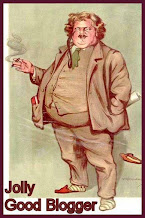Ikke minst siden så mange trekker fram Galilei-saken, slik Asbjørn Dyrendal nevner på Skepsis-bloggen.
Man kan sikkert få assosiasjoner til mangt i slike sammenhenger (Italia, rettssak, vitenskapsmenn, dom...), men det er ikke dermed gitt at de er spesielt treffende.
Den som så langt har fått mest mil ut av dette er nok Stuart Clarke som blogger i Guardian om vitenskap. Hans poeng er at det for både Galilei og dagens dømte handlet om dårlig vitenskapsformidling.
Begrunnelsen er at dommen var for deres sviktende kommunikasjon av det reelle trusselbildet.
Clarke er inne på noe når han sier at det heller ikke for Galilei egentlig handlet om en dom mot vitenskapen, men det er en planetbane eller tre drøyt å hevde at Galileis problem var formidlingsevnen.
Han skal likevel ha ros for å understreke at Galilei hadde for dårlige bevis for tesen om at jorden beveget seg i bane om solen, selv om han ikke nevner at Galileis problem var å legge seg ut med autoritetene i en urolig tid (midt under 30-årskrigens mange revirmarkeringer), bl.a. med i overkant polemisk omtale av pavens astronomiske synspunkter.
As Carl Sagan once said, "extraordinary claims require extraordinary evidence". In 17th century Italy, claiming the Earth moved was extraordinary. The trouble for Galileo was that he did not possess the required extraordinary evidence. His belief that the tides were created by inertia as Earth moved through space failed even a cursory analysis.
Even though history has proved his heliocentric view correct, when challenged at the time, he didn't have a leg to stand on. He had asserted too much, and conviction was a foregone conclusion.Vi ønsker imidlertid å la Galilei-saken ligge nå (interesserte henvises hit og hit). For det mer interessante i denne anledning er at Clarke ender opp med et utsagn som understreker hvor lett det er å tenke feil (og la oss legge til, fordomsfullt) om den vitenskapelige utviklingen på 1600-tallet.
For Galilei-saken førte selvsagt til at samtidens astronomer oppfattet det som farlig å drive videre forskning ("se, Kirken tok Galilei!"), og da særlig i Italia, ikke sant?
In 1633, the punitive treatment of Galileo eviscerated the practice of astronomy in Italy for centuries. He was placed under house arrest for the rest of his life and although the conviction was for miscommunication, astronomy itself became toxic. Even the staunchly Catholic Society of Jesus moved its astronomical efforts to the far east to stay out of the Vatican's gaze.Skal vi tro Clarke ble altså italiensk astronomi kneblet og kvelt, for ikke å si buksprettet, i århundrer, altså minst fram til 1800-tallet. Og jesuittene flyktet, eller i det minste flyttet sin vitenskapelige virksomhet, til Kina.
Men nå er det altså liten grunn til å tro Clarke, slik Thony Christie viser i et noen astronomiske enheter fyrrig innlegg på The Renaissance Mathematicus.
Man trenger i det hele tatt ikke å være italiensk vitenskapsmann for å varsle uvær når han (eller enkelte andre av oss) griper noen i å gå i det berømte historiske baret.
Vi hopper over tordenbygene og starter siteringen når Tony C kommer til det historiske bildet.
I’m not going to write a complete history of seventeenth century Italian astronomy post Galileo but I will indulge in some cherry picking to demonstrate that the good Dr Clark is talking through his posterior. Before I do so I should point out that the Jesuit mission to the Far East, including the transmission of European astronomy, started long before the trial of Galileo and has absolutely nothing to do with it.De første jesuittmisjonærene kom til Kina på 1500-tallet og delte fra første stund av sin mer enn gjennomsnittlige astronomiske kunnskap. Det var rett og slett jesuitter som Matteo Ricci (1552-1610) og Sabatino de Ursis (1575-1620) som lærte kineserne at jorden var rund mens bl.a. Johann Adam Schall (1591–1666) formidlet at jorden beveget seg og ikke var i sentrum av solsystemet.
Men det var altså i Kina, selv om de begynte lenge for Galilei-saken. Hva med Italia? Finner vi ingen astronomer der før 1800-tallet, eller enda senere?
Jo, så avgjort. Vi finner mange. Ganske så fremtredende.
Galileo gained his fame through his telescopic observations so let us start with the history of the telescope in astronomy post Galileo. The first person to successfully develop an astronomical or Keplerian telescope was Francesco Fontana (1580 – 1656) an Italian astronomer. He was superseded as the leading European telescope maker by Eustachio Divini (1610 – 1685), an Italian astronomer, who also made several important astronomical discoveries. Divini reigned supreme until challenged and in his turn superseded as Europe’s number one by Giuseppe Campini (1635 – 1715) an Italian astronomer whose telescopes were purchased by all of the leading European astronomers. It was Campini and not Cassini who first observed the so-called Cassini Division in the Rings of Saturn.Dette er bare toppen av isfjellet.
Giovanni Domenico Cassini (1625 – 1712) was of course an Italian astronomer and a Jesuit educated and trained one at that. Some people might object that Cassini worked in France, and not Italy, as the de facto head of the Paris Observatory but he was already regarded as one of the leading European astronomers when he became the subject of the most expensive transfer deal in seventeenth century astronomy, moving from professorship at the University of Bologna to Paris. Cassini was a protégée of Riccioli and Grimaldi. Giovanni Battista Riccioli (1598 -1671) was a Jesuit priest who was the first to successfully confirm Galileo’s laws of fall whilst his partner Francesco Maria Grimaldi (1618- 1663), another Jesuit priest, was the first to observe and describe optical diffraction. Together they produced one of the most accurate maps of the moon.Ingen grunn til å gi seg der.
Astronomy is a science that requires the accumulation of vast quantities of data, best accomplished as a collective activity. In the seventeenth century Athanasius Kircher (1601 -1680), also a Jesuit priest, who was not an Italian, but was professor of Mathematics at the Collegio Romano, the Jesuit University in Rome, collected data from Jesuit and non-Jesuit astronomers throughout the world that he collated and then distributed throughout the European astronomical community.Listen fortsetter.
Niccolò Zucchi (1586 -1670) Jesuit astronomer and friend of Galileo famous for his failed attempt to construct a reflecting telescope. Giovanni Battista Zupi (1590 -1650), Jesuit astronomer, who was the first to observe the orbital phases of mercury, thus proving that it orbited the sun. Geminiano Montanari (1633 -1687), Italian astronomer, was the first to demonstrate that Algol is a variable star. Carlo Antonio Manzini (1599 – 1668), Italian astronomer, was the first to publish an account of how to grind and polish telescope lenses.Siden Thony C gir seg der, kan vi gjøre det samme. Men det er dessverre liten grunn til å tro at Clarke og andre populærvitenskapelige skribenter vil gi seg med å spre feil om Galilei-saken med det første
Eller bli dømt for sviktende vitenskapsformidling.






















Ingen kommentarer :
Legg inn en kommentar